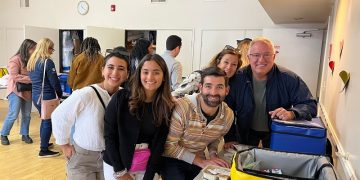Governor of California, Gavin Newsom, has stated that the state intends to go ahead with a move to bring blockchain and cryptocurrency technology into the state government’s operations. This marks a historic move from a state to explore the use of digital assets within a public sphere.
Newsom announced that this initiative will be dubbed the California Breakthrough Project and will seek to team up with major players in the fintech and DeFi industry to improve public services for the residents of the state.
This announcement comes fresh off the back of President Trump’s GENIUS Act, which seems to mark a favorable turn towards cryptocurrency use in the US. For California, the new initiative will focus on bringing in large names from the crypto industry, including Coinbase and Ripple. These platforms will team up with the likes of Instacart and Snap in a bid to streamline governmental processes and modernize the public sector.
The movement towards more mainstream use of cryptocurrencies and digital assets is bound to boost demand for blockchain technology in the country. This will likely see the market bull and demand for Bitcoin and Ethereum soar. Governmental acceptance of crypto will also likely expand market demands and allow for smaller cryptocurrencies and digital assets to establish themselves in the blockchain. This should allow alternatives to the bigger cryptocurrencies to shine through and establish themselves in the industry. The likes of Bitcoinhyper ($Hyper – https://bitcoinhyper.com/), which offers a faster Bitcoin service with lower fees, could be beneficiaries from widespread governmental acceptance of cryptocurrencies.
Newsom has set a limit of 90 days for the state departments to come up with plans for efficient use of the tech in all aspects of public sector workings. This stretches widely from hiring pathways to customer experience and everything in between. This is not the first time the state has dabbled in the blockchain world. The writing seems to have been on the wall since 2019, when California established a working group on how best to use crypto in government. This was reflected in a real-life success story for the Department of Motor Vehicles, which tokenized car titles in the region of 42 million on Avalanche. This allowed residents to claim vehicle titles from the comfort of their own home and avoid long queues at the DMV offices. This is a prime example of how crypto can be used by governments for true innovation that helps the people in the state.
The Breakthrough Project is set to include government officials along with labor representatives and civil groups, which should ensure transparency, credibility, and accountability when rollout does occur. It also allows a democratic approach to next steps, which is imperative given the nature of using these private blockchain industry members within the public sector framework. A balanced approach will be crucial for Newsom and the Californian state moving forward, but it should offer innovation and creativity from lots of different perspectives. Alongside the burgeoning Project, the already firmly established crypto companies will bring different specialities to the table, which should allow for diversity in plans. Coinbase is an expert in asset management, whilst Ripple specializes particularly in payment systems. This diverse portfolio is a strong blueprint to allow for the ambitious modernization plans.
With California seemingly going full steam ahead with plans to fully incorporate blockchain technology into its governance framework, success will be imperative. With the size and influence of this state within the US, positive results will likely lead to wider spread adoption across other states. However, the converse could see crypto never make the break into the public sector.
The success of the project will depend on how much benefit this move is going to bring to Californian residents. They will be the judge of whether this aspirational modernization is likely to be effectively and widely implemented throughout public services in the state.











